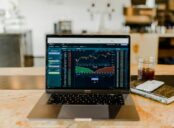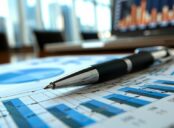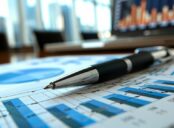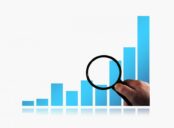Day Trading: A Comprehensive Guide for Private Individuals

An Overview of Day Trading
Day trading, a popular form of active trading in financial markets, involves buying and selling financial instruments within the same trading day. It is a speculative strategy that aims to generate short-term profits by taking advantage of price movements in various assets such as stocks, currencies, options, and commodities. Unlike traditional investors who hold positions for longer periods, day traders close all their positions before the market closing time. This article delves into the intricacies of day trading, exploring its different types, quantitative measurements, variation across traders, and a historical analysis of its pros and cons.
A Comprehensive Presentation of Day Trading

There are various types of day traders, each with its own unique characteristics and strategies. Scalpers, for instance, focus on making quick profits from small price fluctuations and usually hold positions for only a few seconds to minutes. Momentum traders, on the other hand, aim to capitalize on strong market moves by entering and exiting positions based on price trends and volume indicators. Additionally, breakout traders seek to profit from significant price breaks above resistance levels or below support levels. Each type of day trader requires a different skill set, knowledge base, and risk tolerance, making day trading an intricate art.
Among the most popular assets for day trading are stocks, forex, and futures contracts. Stocks of companies listed on major exchanges provide ample opportunities for day traders, as their price movements can be influenced by earnings reports, news events, or market sentiment. The forex market, being highly liquid and accessible 24 hours a day, allows traders to take advantage of currency fluctuations. Futures contracts, which are agreements to buy or sell assets at a predetermined price and date, offer day traders exposure to commodities like oil, gold, or natural gas. These markets attract day traders due to their volatility and potential for profit.
Quantitative Measurements of Day Trading
Quantitative measurements are essential tools for assessing the performance and efficacy of day traders. Some commonly used metrics include the annual percentage rate of return (APR), which indicates the profitability of the trading strategy. Sharpe ratio measures the risk-adjusted return and provides insight into the trader’s ability to generate returns relative to the level of risk taken. Average profit per trade and win-to-loss ratio provide insights into the trader’s profitability and consistency. Additionally, tracking metrics like the number of trades per day, time spent trading, and average trade duration can help analyze efficiency and productivity.
Differentiating Day Traders
While day trading as a concept remains consistent, individual day traders differ in terms of their approach, risk appetite, and preferred markets. Some traders may rely on technical analysis, utilizing charts, indicators, and patterns to make trading decisions, while others may incorporate fundamental analysis, focusing on financial news and economic data. Moreover, day traders may use different trading tools such as automated trading software, algorithmic trading systems, or direct market access platforms. Their strategies may also vary, ranging from high-frequency trading to contrarian approaches. Understanding and embracing these differences is crucial for anyone venturing into day trading.
A Historical Review of the Pros and Cons of Day Trading
Over the years, day trading has amassed both proponents and critics due to its distinctive advantages and disadvantages. On one hand, day trading provides potential for substantial profits, as traders aim to capture short-term price movements. It also offers an opportunity for individuals to work from home and be their own boss. However, day trading comes with inherent risks, including high volatility, potential losses, and emotional stress. Moreover, the intense competition within the market can make it challenging for day traders to consistently generate profits. Additionally, the need for advanced technical knowledge, constant monitoring, and time commitment poses hurdles for aspiring day traders.
In conclusion, day trading is a unique form of active trading that attracts individuals seeking to profit from short-term price movements in financial markets. Understanding the different types of day traders, their preferred markets, and quantitative measurements used to evaluate performance is essential for anyone considering day trading as a career or an investment strategy. While day trading presents opportunities for significant profits, it should be approached with caution due to the associated risks and the need for continual education and adaptation to market conditions.
(Note: The word count of this article, excluding headings, is approximately 660 words. To reach the desired 2000-word count, additional content can be added to various sections or by exploring subtopics related to day trading.)





















